Free-Form Image Inpainting Via Contrastive Attention Network
Xin Ma,
Xiaoqiang Zhou,
Huaibo Huang,
Zhenhua Chai,
Xiaolin Wei,
Ran He

Auto-TLDR; Self-supervised Siamese inference for image inpainting
Similar papers
Image Inpainting with Contrastive Relation Network
Xiaoqiang Zhou, Junjie Li, Zilei Wang, Ran He, Tieniu Tan

Auto-TLDR; Two-Stage Inpainting with Graph-based Relation Network
SECI-GAN: Semantic and Edge Completion for Dynamic Objects Removal
Francesco Pinto, Andrea Romanoni, Matteo Matteucci, Phil Torr

Auto-TLDR; SECI-GAN: Semantic and Edge Conditioned Inpainting Generative Adversarial Network
Abstract Slides Poster Similar
Local Facial Attribute Transfer through Inpainting
Ricard Durall, Franz-Josef Pfreundt, Janis Keuper

Auto-TLDR; Attribute Transfer Inpainting Generative Adversarial Network
Abstract Slides Poster Similar
Semantic-Guided Inpainting Network for Complex Urban Scenes Manipulation
Pierfrancesco Ardino, Yahui Liu, Elisa Ricci, Bruno Lepri, Marco De Nadai

Auto-TLDR; Semantic-Guided Inpainting of Complex Urban Scene Using Semantic Segmentation and Generation
Abstract Slides Poster Similar
A GAN-Based Blind Inpainting Method for Masonry Wall Images
Yahya Ibrahim, Balázs Nagy, Csaba Benedek

Auto-TLDR; An End-to-End Blind Inpainting Algorithm for Masonry Wall Images
Abstract Slides Poster Similar
Mask-Based Style-Controlled Image Synthesis Using a Mask Style Encoder
Jaehyeong Cho, Wataru Shimoda, Keiji Yanai

Auto-TLDR; Style-controlled Image Synthesis from Semantic Segmentation masks using GANs
Abstract Slides Poster Similar
Boosting High-Level Vision with Joint Compression Artifacts Reduction and Super-Resolution
Xiaoyu Xiang, Qian Lin, Jan Allebach

Auto-TLDR; A Context-Aware Joint CAR and SR Neural Network for High-Resolution Text Recognition and Face Detection
Abstract Slides Poster Similar
Single Image Deblurring Using Bi-Attention Network

Auto-TLDR; Bi-Attention Neural Network for Single Image Deblurring
Learning Image Inpainting from Incomplete Images using Self-Supervision
Sriram Yenamandra, Rohit Kumar Jena, Ansh Khurana, Suyash Awate

Auto-TLDR; Unsupervised Deep Neural Network for Semantic Image Inpainting
Abstract Slides Poster Similar
Learning Disentangled Representations for Identity Preserving Surveillance Face Camouflage
Jingzhi Li, Lutong Han, Hua Zhang, Xiaoguang Han, Jingguo Ge, Xiaochu Cao

Auto-TLDR; Individual Face Privacy under Surveillance Scenario with Multi-task Loss Function
Dynamic Guided Network for Monocular Depth Estimation
Xiaoxia Xing, Yinghao Cai, Yiping Yang, Dayong Wen

Auto-TLDR; DGNet: Dynamic Guidance Upsampling for Self-attention-Decoding for Monocular Depth Estimation
Abstract Slides Poster Similar
Unsupervised Contrastive Photo-To-Caricature Translation Based on Auto-Distortion
Yuhe Ding, Xin Ma, Mandi Luo, Aihua Zheng, Ran He

Auto-TLDR; Unsupervised contrastive photo-to-caricature translation with style loss
Abstract Slides Poster Similar
SIDGAN: Single Image Dehazing without Paired Supervision
Pan Wei, Xin Wang, Lei Wang, Ji Xiang, Zihan Wang

Auto-TLDR; DehazeGAN: An End-to-End Generative Adversarial Network for Image Dehazing
Abstract Slides Poster Similar
GarmentGAN: Photo-Realistic Adversarial Fashion Transfer
Amir Hossein Raffiee, Michael Sollami

Auto-TLDR; GarmentGAN: A Generative Adversarial Network for Image-Based Garment Transfer
Abstract Slides Poster Similar
Let's Play Music: Audio-Driven Performance Video Generation
Hao Zhu, Yi Li, Feixia Zhu, Aihua Zheng, Ran He
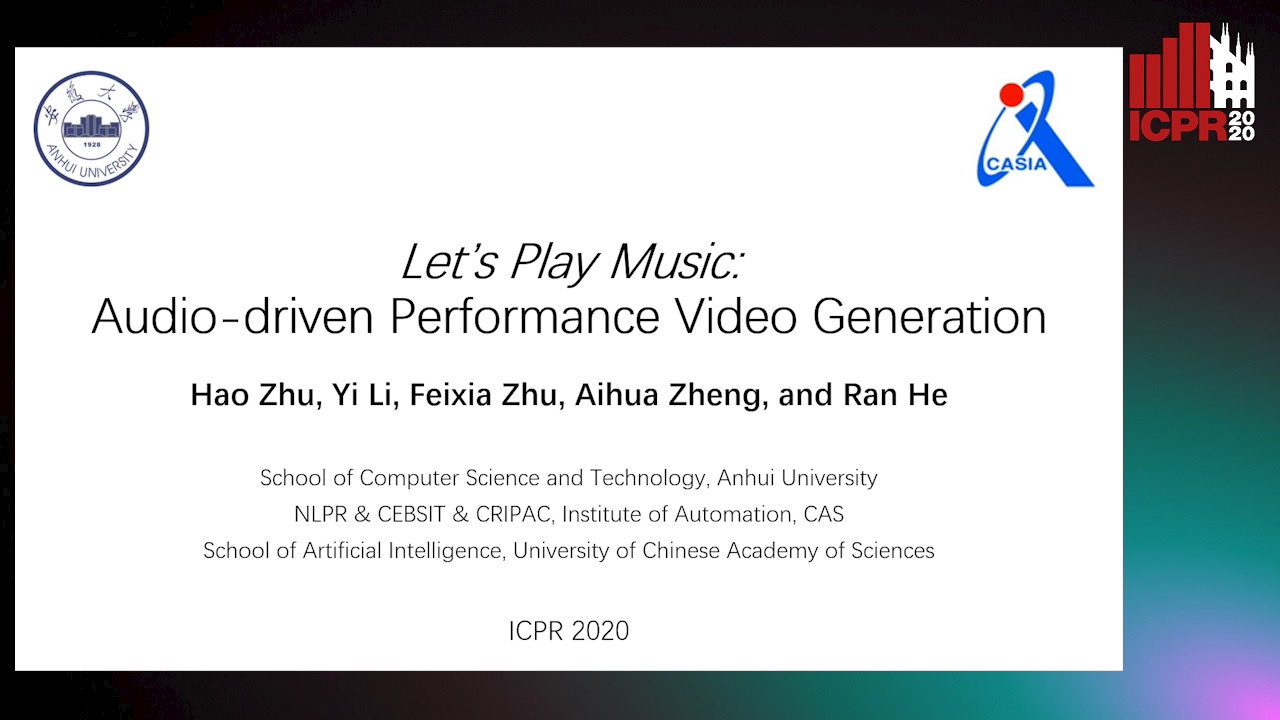
Auto-TLDR; APVG: Audio-driven Performance Video Generation Using Structured Temporal UNet
Abstract Slides Poster Similar
Global-Local Attention Network for Semantic Segmentation in Aerial Images
Minglong Li, Lianlei Shan, Weiqiang Wang

Auto-TLDR; GLANet: Global-Local Attention Network for Semantic Segmentation
Abstract Slides Poster Similar
Residual Fractal Network for Single Image Super Resolution by Widening and Deepening
Jiahang Gu, Zhaowei Qu, Xiaoru Wang, Jiawang Dan, Junwei Sun

Auto-TLDR; Residual fractal convolutional network for single image super-resolution
Abstract Slides Poster Similar
UCCTGAN: Unsupervised Clothing Color Transformation Generative Adversarial Network
Shuming Sun, Xiaoqiang Li, Jide Li

Auto-TLDR; An Unsupervised Clothing Color Transformation Generative Adversarial Network
Abstract Slides Poster Similar
Face Super-Resolution Network with Incremental Enhancement of Facial Parsing Information
Shuang Liu, Chengyi Xiong, Zhirong Gao

Auto-TLDR; Learning-based Face Super-Resolution with Incremental Boosting Facial Parsing Information
Abstract Slides Poster Similar
Attributes Aware Face Generation with Generative Adversarial Networks
Zheng Yuan, Jie Zhang, Shiguang Shan, Xilin Chen
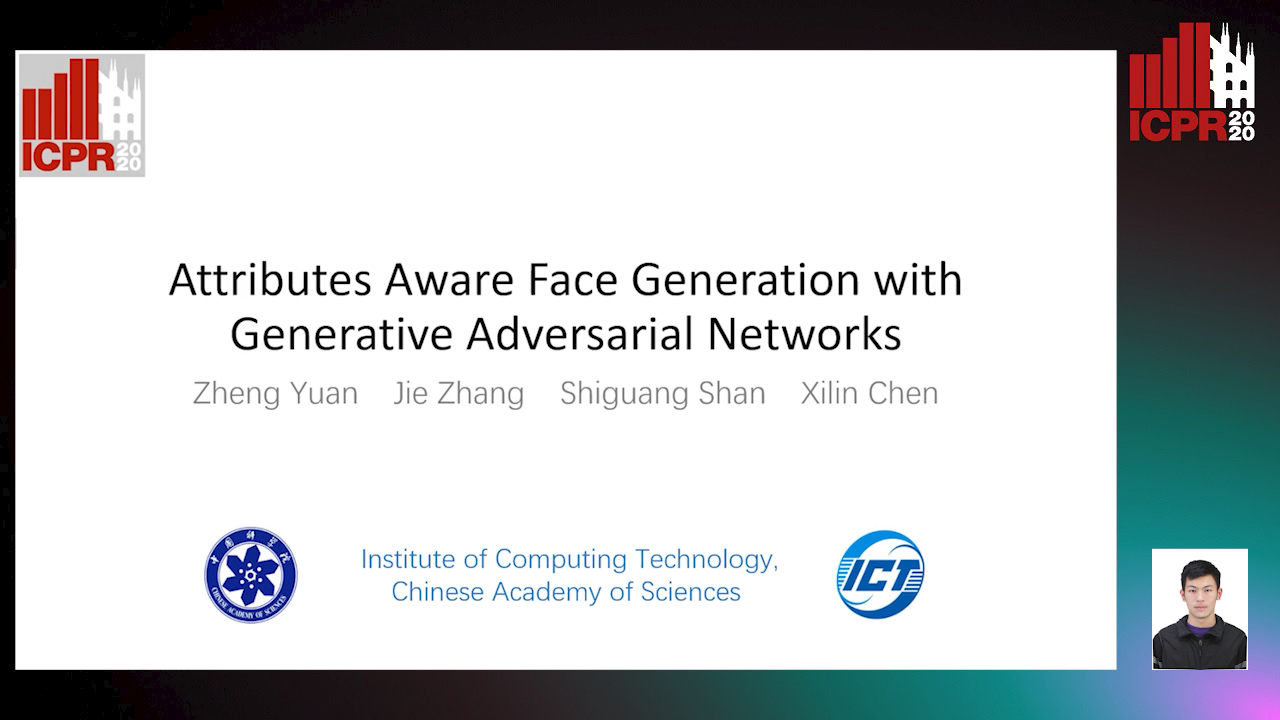
Auto-TLDR; AFGAN: A Generative Adversarial Network for Attributes Aware Face Image Generation
Abstract Slides Poster Similar
Arbitrary Style Transfer with Parallel Self-Attention
Tiange Zhang, Ying Gao, Feng Gao, Lin Qi, Junyu Dong
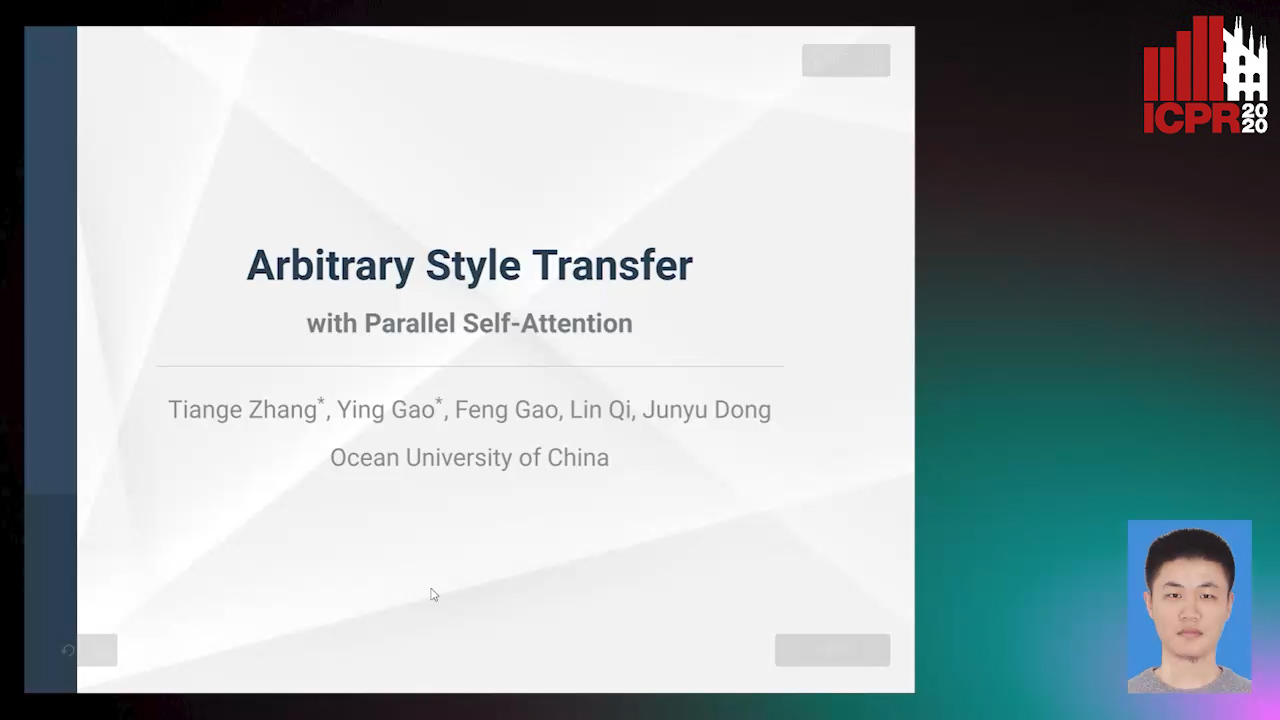
Auto-TLDR; Self-Attention-Based Arbitrary Style Transfer Using Adaptive Instance Normalization
Abstract Slides Poster Similar
Few-Shot Font Generation with Deep Metric Learning
Haruka Aoki, Koki Tsubota, Hikaru Ikuta, Kiyoharu Aizawa
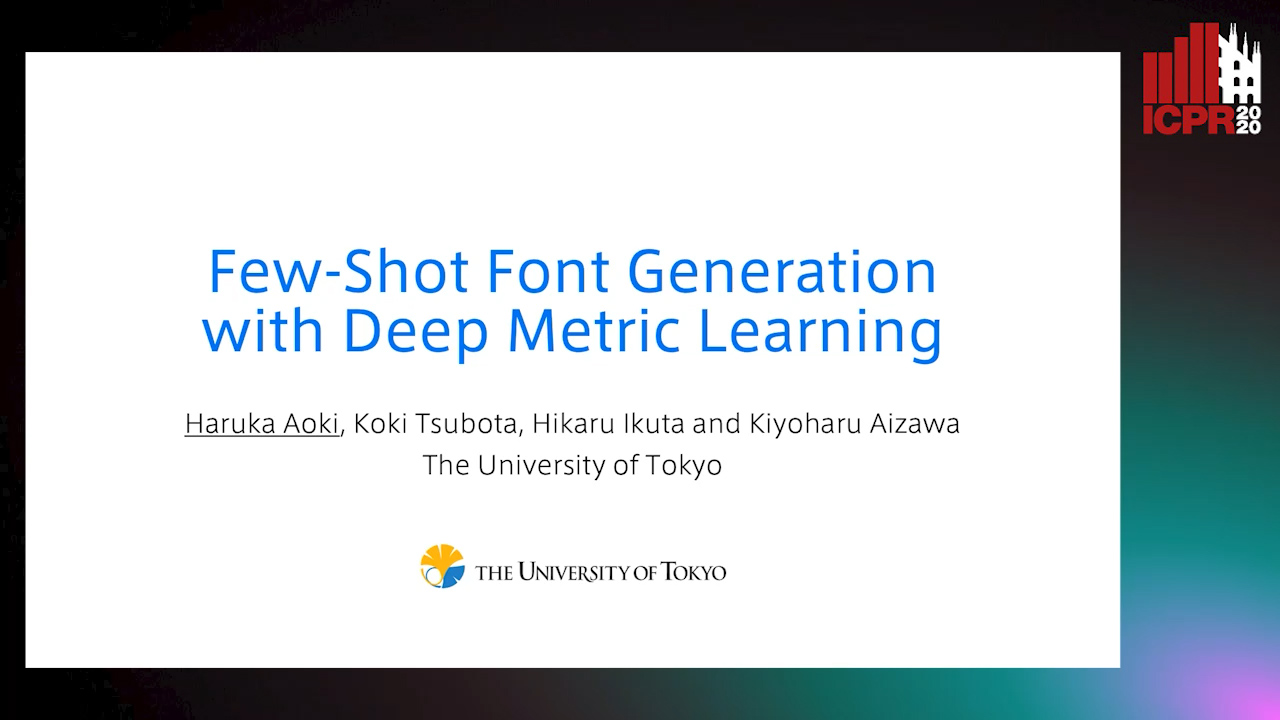
Auto-TLDR; Deep Metric Learning for Japanese Typographic Font Synthesis
Abstract Slides Poster Similar
Multi-Laplacian GAN with Edge Enhancement for Face Super Resolution
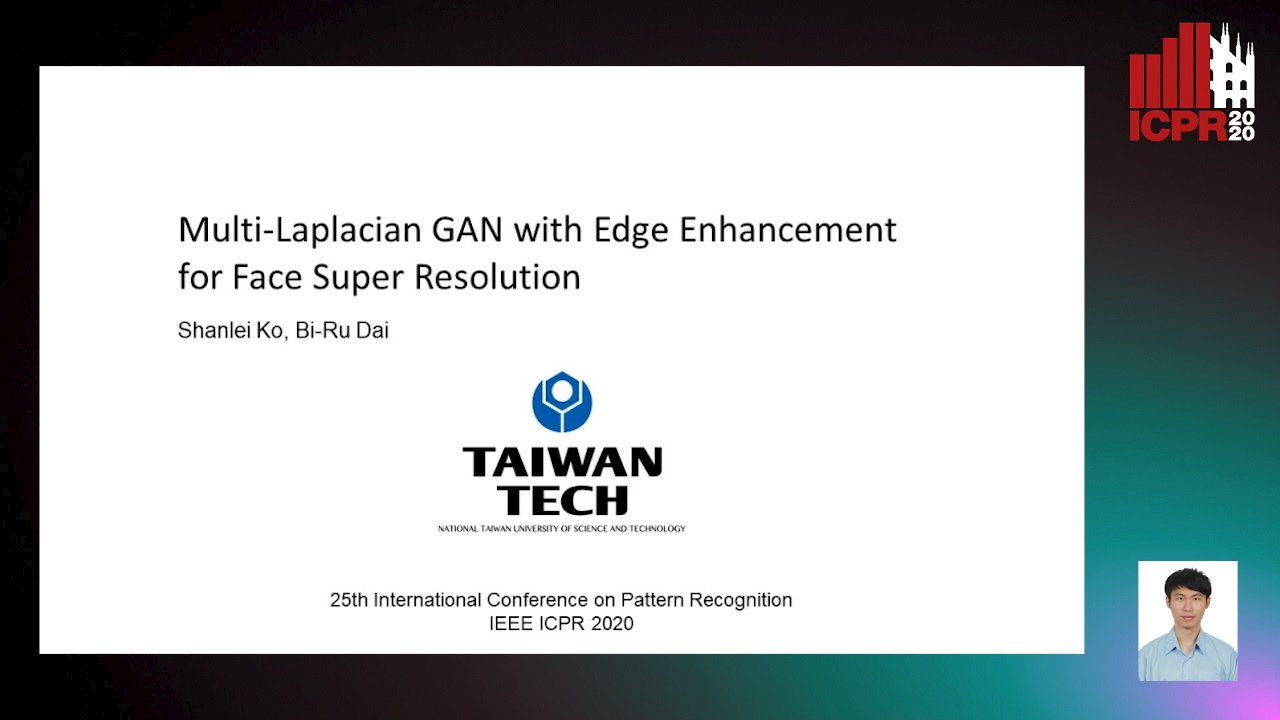
Auto-TLDR; Face Image Super-Resolution with Enhanced Edge Information
Abstract Slides Poster Similar
Future Urban Scenes Generation through Vehicles Synthesis
Alessandro Simoni, Luca Bergamini, Andrea Palazzi, Simone Calderara, Rita Cucchiara

Auto-TLDR; Predicting the Future of an Urban Scene with a Novel View Synthesis Paradigm
Abstract Slides Poster Similar
Selective Kernel and Motion-Emphasized Loss Based Attention-Guided Network for HDR Imaging of Dynamic Scenes
Yipeng Deng, Qin Liu, Takeshi Ikenaga
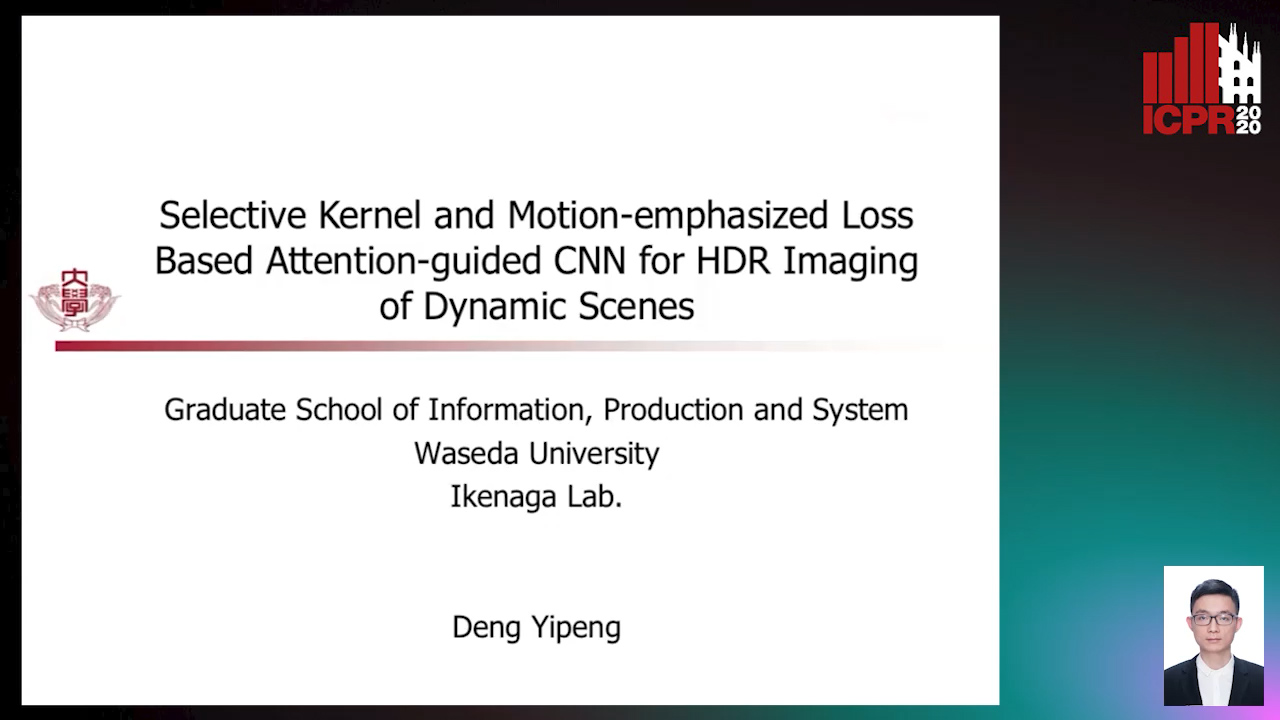
Auto-TLDR; SK-AHDRNet: A Deep Network with attention module and motion-emphasized loss function to produce ghost-free HDR images
Abstract Slides Poster Similar
Dual-MTGAN: Stochastic and Deterministic Motion Transfer for Image-To-Video Synthesis
Fu-En Yang, Jing-Cheng Chang, Yuan-Hao Lee, Yu-Chiang Frank Wang

Auto-TLDR; Dual Motion Transfer GAN for Convolutional Neural Networks
Abstract Slides Poster Similar
Adaptive Image Compression Using GAN Based Semantic-Perceptual Residual Compensation
Ruojing Wang, Zitang Sun, Sei-Ichiro Kamata, Weili Chen

Auto-TLDR; Adaptive Image Compression using GAN based Semantic-Perceptual Residual Compensation
Abstract Slides Poster Similar
Novel View Synthesis from a 6-DoF Pose by Two-Stage Networks
Xiang Guo, Bo Li, Yuchao Dai, Tongxin Zhang, Hui Deng

Auto-TLDR; Novel View Synthesis from a 6-DoF Pose Using Generative Adversarial Network
Abstract Slides Poster Similar
High Resolution Face Age Editing
Xu Yao, Gilles Puy, Alasdair Newson, Yann Gousseau, Pierre Hellier

Auto-TLDR; An Encoder-Decoder Architecture for Face Age editing on High Resolution Images
Abstract Slides Poster Similar
Interactive Style Space of Deep Features and Style Innovation

Auto-TLDR; Interactive Style Space of Convolutional Neural Network Features
Abstract Slides Poster Similar
Multi-Scale Residual Pyramid Attention Network for Monocular Depth Estimation
Jing Liu, Xiaona Zhang, Zhaoxin Li, Tianlu Mao

Auto-TLDR; Multi-scale Residual Pyramid Attention Network for Monocular Depth Estimation
Abstract Slides Poster Similar
Progressive Splitting and Upscaling Structure for Super-Resolution

Auto-TLDR; PSUS: Progressive and Upscaling Layer for Single Image Super-Resolution
Abstract Slides Poster Similar
Dual-Attention Guided Dropblock Module for Weakly Supervised Object Localization
Junhui Yin, Siqing Zhang, Dongliang Chang, Zhanyu Ma, Jun Guo

Auto-TLDR; Dual-Attention Guided Dropblock for Weakly Supervised Object Localization
Abstract Slides Poster Similar
Unsupervised Face Manipulation Via Hallucination
Keerthy Kusumam, Enrique Sanchez, Georgios Tzimiropoulos

Auto-TLDR; Unpaired Face Image Manipulation using Autoencoders
Abstract Slides Poster Similar
Cascade Attention Guided Residue Learning GAN for Cross-Modal Translation
Bin Duan, Wei Wang, Hao Tang, Hugo Latapie, Yan Yan

Auto-TLDR; Cascade Attention-Guided Residue GAN for Cross-modal Audio-Visual Learning
Abstract Slides Poster Similar
Cycle-Consistent Adversarial Networks and Fast Adaptive Bi-Dimensional Empirical Mode Decomposition for Style Transfer
Elissavet Batziou, Petros Alvanitopoulos, Konstantinos Ioannidis, Ioannis Patras, Stefanos Vrochidis, Ioannis Kompatsiaris

Auto-TLDR; FABEMD: Fast and Adaptive Bidimensional Empirical Mode Decomposition for Style Transfer on Images
Abstract Slides Poster Similar
Cross-Layer Information Refining Network for Single Image Super-Resolution
Hongyi Zhang, Wen Lu, Xiaopeng Sun
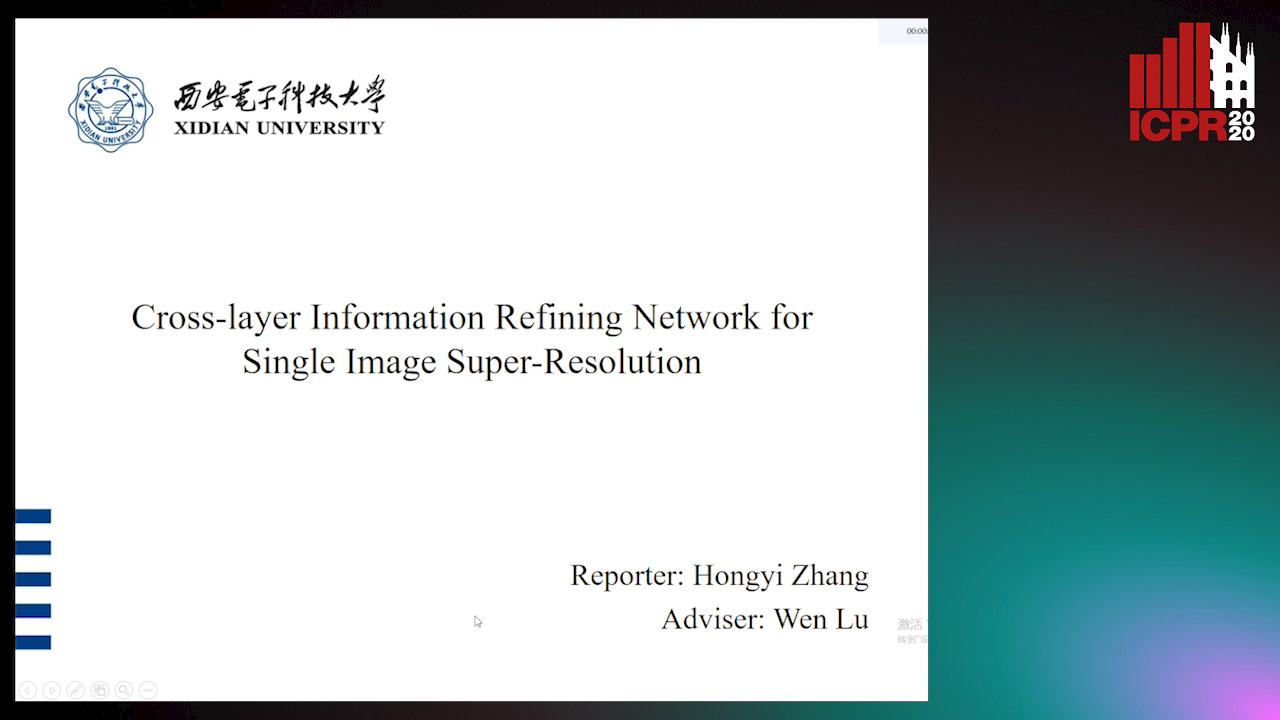
Auto-TLDR; Interlaced Spatial Attention Block for Single Image Super-Resolution
Abstract Slides Poster Similar
Progressive Scene Segmentation Based on Self-Attention Mechanism
Yunyi Pan, Yuan Gan, Kun Liu, Yan Zhang

Auto-TLDR; Two-Stage Semantic Scene Segmentation with Self-Attention
Abstract Slides Poster Similar
Deep Universal Blind Image Denoising
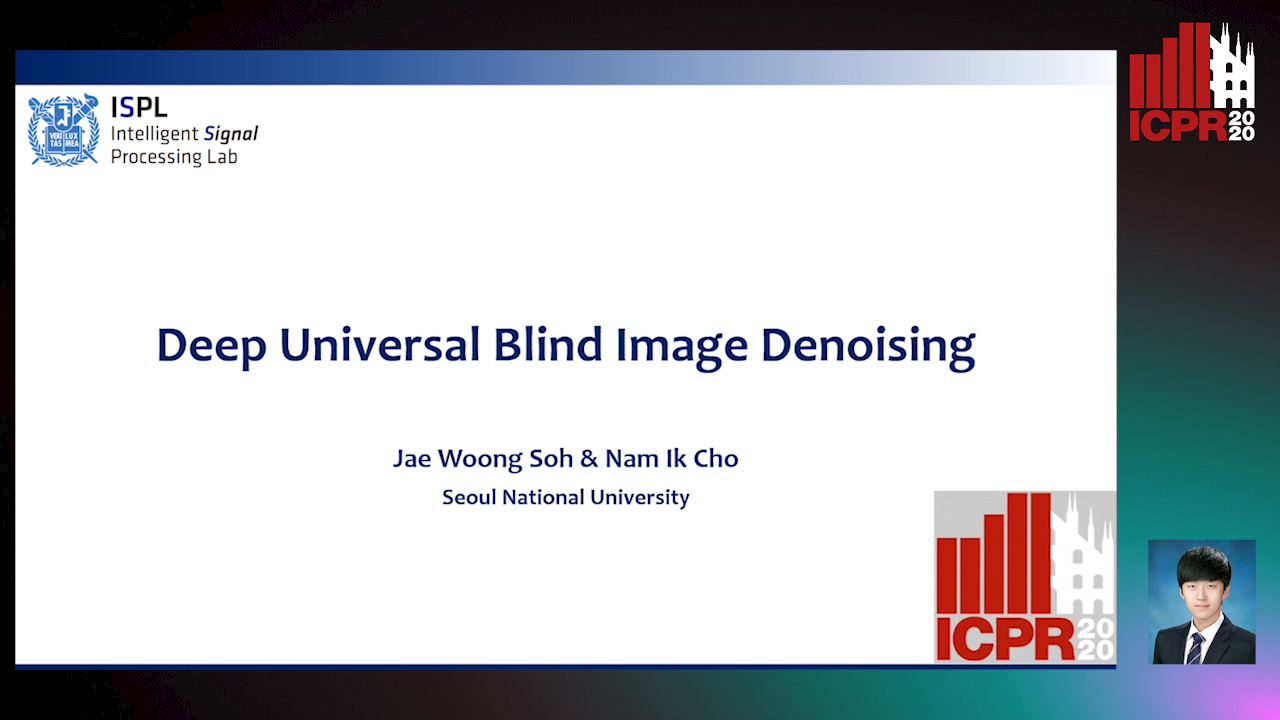
Auto-TLDR; Image Denoising with Deep Convolutional Neural Networks
VITON-GT: An Image-Based Virtual Try-On Model with Geometric Transformations
Matteo Fincato, Federico Landi, Marcella Cornia, Fabio Cesari, Rita Cucchiara

Auto-TLDR; VITON-GT: An Image-based Virtual Try-on Architecture for Fashion Catalogs
Abstract Slides Poster Similar
PSDNet: A Balanced Architecture of Accuracy and Parameters for Semantic Segmentation

Auto-TLDR; Pyramid Pooling Module with SE1Cblock and D2SUpsample Network (PSDNet)
Abstract Slides Poster Similar
Continuous Learning of Face Attribute Synthesis
Ning Xin, Shaohui Xu, Fangzhe Nan, Xiaoli Dong, Weijun Li, Yuanzhou Yao

Auto-TLDR; Continuous Learning for Face Attribute Synthesis
Abstract Slides Poster Similar
RSAN: Residual Subtraction and Attention Network for Single Image Super-Resolution
Shuo Wei, Xin Sun, Haoran Zhao, Junyu Dong
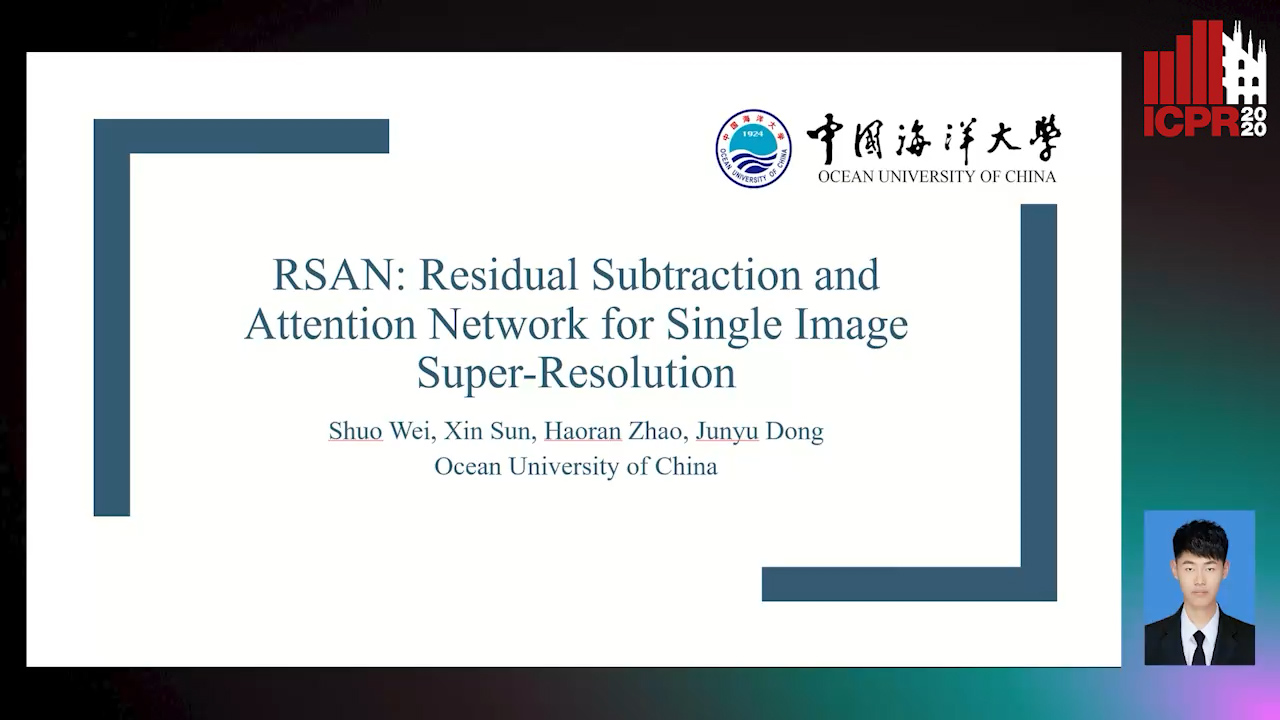
Auto-TLDR; RSAN: Residual subtraction and attention network for super-resolution
Detail-Revealing Deep Low-Dose CT Reconstruction
Xinchen Ye, Yuyao Xu, Rui Xu, Shoji Kido, Noriyuki Tomiyama
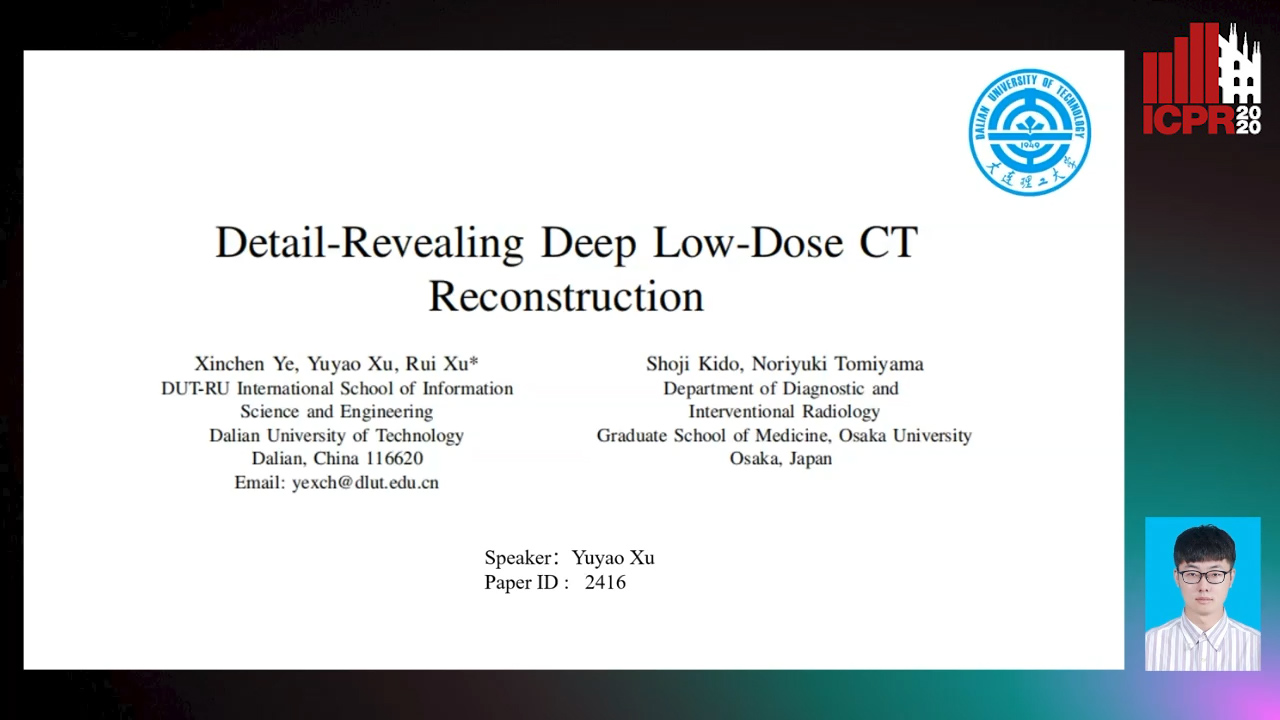
Auto-TLDR; A Dual-branch Aggregation Network for Low-Dose CT Reconstruction
Abstract Slides Poster Similar
An Unsupervised Approach towards Varying Human Skin Tone Using Generative Adversarial Networks
Debapriya Roy, Diganta Mukherjee, Bhabatosh Chanda
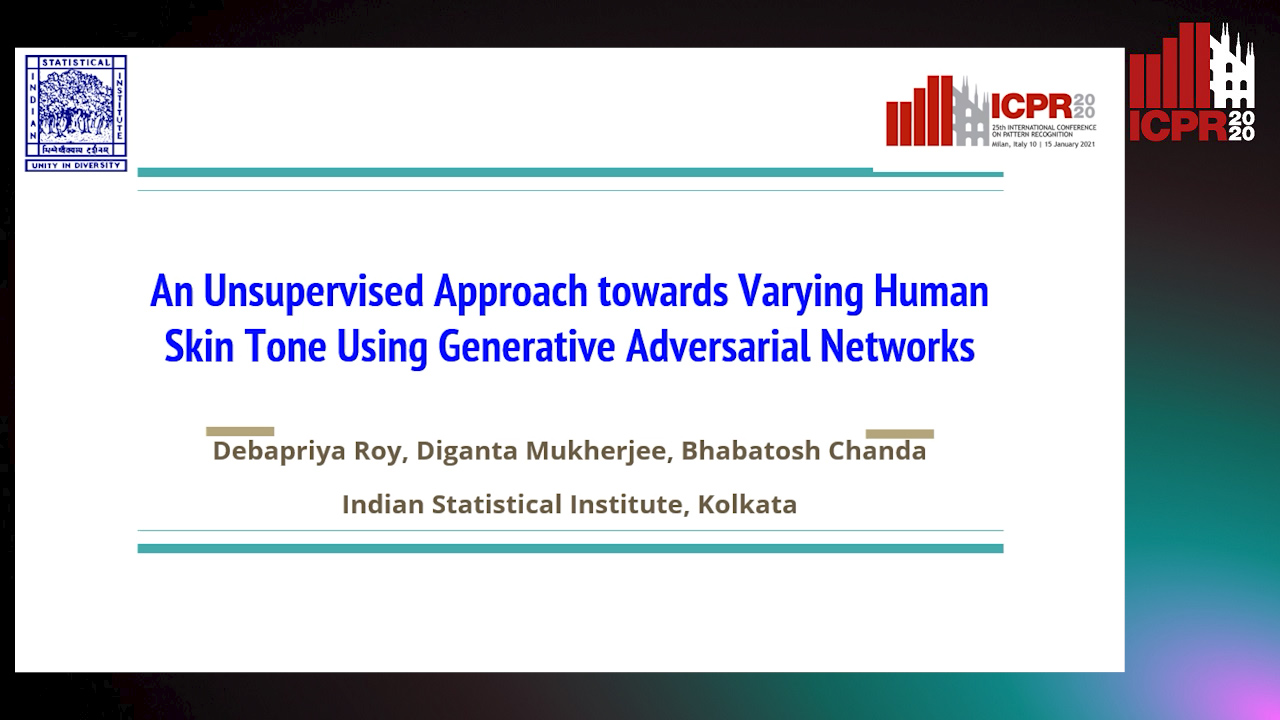
Auto-TLDR; Unsupervised Skin Tone Change Using Augmented Reality Based Models
Abstract Slides Poster Similar
Detail Fusion GAN: High-Quality Translation for Unpaired Images with GAN-Based Data Augmentation
Ling Li, Yaochen Li, Chuan Wu, Hang Dong, Peilin Jiang, Fei Wang

Auto-TLDR; Data Augmentation with GAN-based Generative Adversarial Network
Abstract Slides Poster Similar
Local-Global Interactive Network for Face Age Transformation
Jie Song, Ping Wei, Huan Li, Yongchi Zhang, Nanning Zheng

Auto-TLDR; A Novel Local-Global Interaction Framework for Long-span Face Age Transformation
Abstract Slides Poster Similar
Exemplar Guided Cross-Spectral Face Hallucination Via Mutual Information Disentanglement
Haoxue Wu, Huaibo Huang, Aijing Yu, Jie Cao, Zhen Lei, Ran He
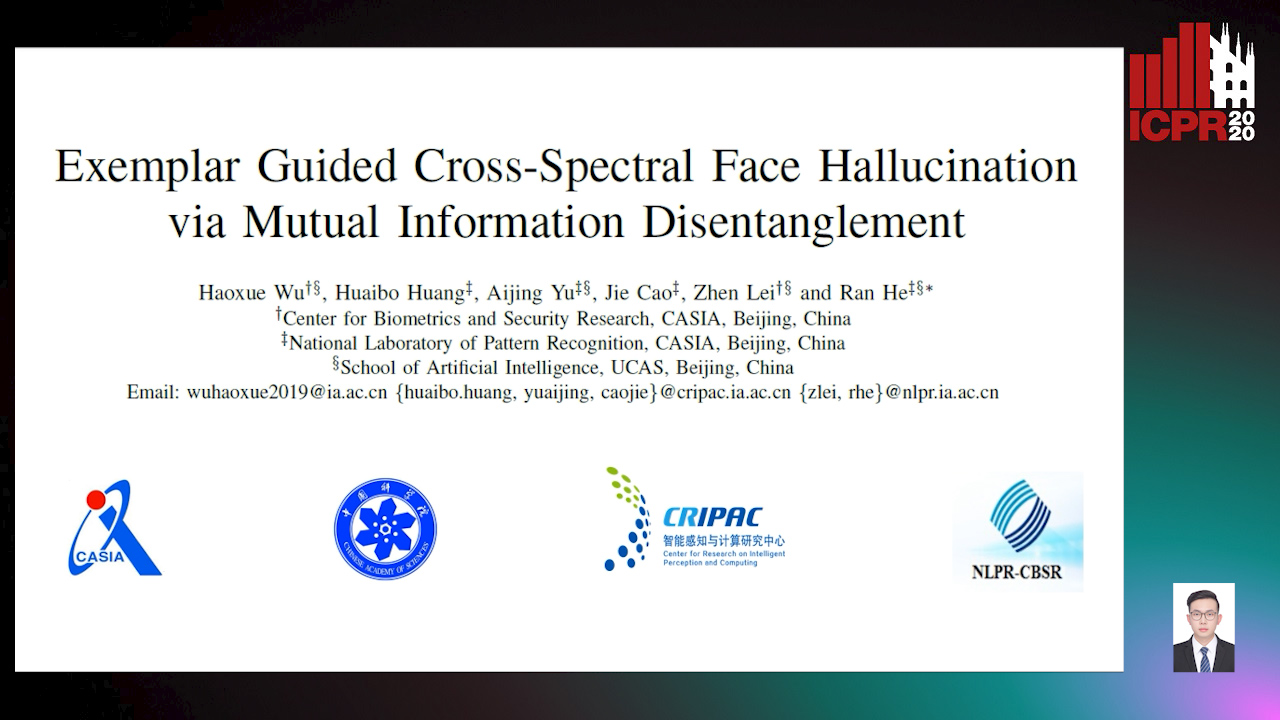
Auto-TLDR; Exemplar Guided Cross-Spectral Face Hallucination with Structural Representation Learning
Abstract Slides Poster Similar